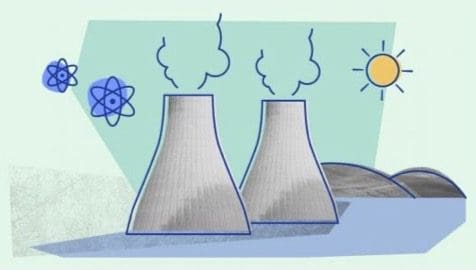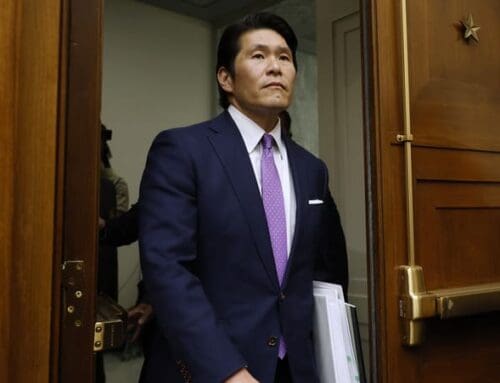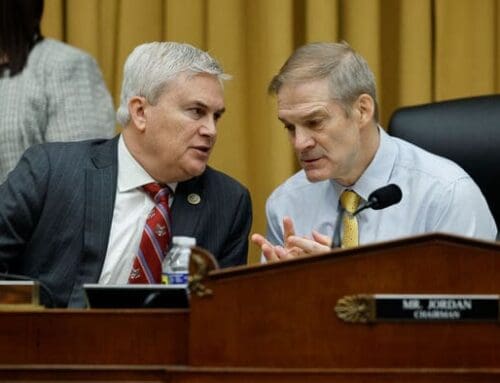

Climate warms for nuclear power
Worldwide, sentiment towards nuclear energy is warming, as rising energy prices bite and emission targets prove hard to reach.
The European Commission (EC), which is determined to make Europe the first continent to meet ‘net zero’ targets, has declared both natural gas and nuclear power to be sustainable, green energy, albeit only as transition fuels.
To be eligible for the designation, gas projects have to replace coal and include plans to switch to renewables or hydrogen by 2035. Gas produces none of the pollutants, and half the carbon dioxide emissions of coal.
Nuclear projects must be able to safely handle waste to earn the green label in the EU’s taxonomy governing energy regulation and investment.
Much nuclear waste can simply be reprocessed as fuel for new types of reactors, and the only challenge for the remainder is the not-in-my-backyard problem.
Nuclear waste has a low volume and can easily be stored in perfect safety, but nobody wants it near their own city, town, village or farm, owing to irrational fears whipped up by Hollywood and environmental lobby groups.
Nuclear waste is only a problem in the mind of the public. It is not an engineering challenge.
Unless 20 of the 27 EU member states object, which is believed to be unlikely, the EC ruling to consider nuclear and gas green will now pass into law.
In the US, president Biden wants to eliminate greenhouse gas emissions from the power industry by 2035. This highly ambitious target, along with growing electricity demand and rising energy prices, has made even past opponents of nuclear power, chiefly among the Democrats, look favourably on extending the life of existing nuclear plants and investing in new nuclear power.
Amid bipartisan support, Kathryn Huff, assistant secretary for nuclear energy at the Department of Energy, told a recent conference of the American Nuclear Society: ‘The Biden administration has been very clear that we will get to the net zero goals. They’re incredibly aggressive goals, and nuclear is a part of that solution, a very big part potentially.’
In both Europe and the US, energy security and national security are drivers of the rapprochement with nuclear power.
Diablo Canyon
Anti-nuclear environmentalists think the EC is high, calling it greenwashing and dirty politics.
They’re wrong. The science is firmly on the side of nuclear. In fact, there’s nothing ‘transitional’ about nuclear’s green credentials. It is the safest, cleanest most reliable, and least environmentally harmful source of energy known to man.
A recent Stanford study found that delaying the retirement of California’s Diablo Canyon nuclear power plant from 2025 to 2035 ‘would reduce California power sector carbon emissions by more than 10% from 2017 levels and reduce reliance on gas, save $2.6 billion in power system costs, and bolster system reliability to mitigate brownouts; if operated to 2045 and beyond, Diablo Canyon could save up to $21 billion in power system costs and spare 90 000 acres of land from use for energy production, while meeting coastal protection requirements.’
Furthermore, the nuclear plant could power desalination providing substantial water supplies to water-stressed regions of the state, at a low investment cost compared to alternative water supply schemes.
It could also power a hydrogen plant to meet growing demand for zero-carbon fuels, ‘at a cost up to 50% less than hydrogen produced from solar and wind power, with a much smaller land footprint’.
One would think environmentalists would be delighted about all this, but the unfortunate reality is that most of them are so heavily invested – emotionally, politically and financially – in solar and wind, that they cannot tolerate the competition from nuclear (or natural gas, for that matter).
Springtime
After a long winter – exacerbated by a disaster at Chernobyl, non-disastrous meltdowns at Three Mile Island and Fukushima, a steady stream of apocalyptic drivel from Hollywood, and budget overruns associated with mega-projects – nuclear energy is entering a promising springtime.
Around the world, nuclear power plants are being built. Many of them are defying the poor reputation nuclear reactors have for running over budget and over deadlines.
Cost-overruns and delays are, of course, not unique to nuclear plants, but attend most mega-projects. Some delays are introduced by obstructionist ligitation on the part of anti-nuclear lobby groups. But it doesn’t have to be this way.
The United Arab Emirates (UAE) is close to completing the first commercial nuclear power plant in the Arab world. Last month, it licenced the third of four 1 400MW reactor units at its Barakah nuclear power plant, being built by Korea Electric Power Corporation. It is slightly ahead of schedule for final completion in 2023. At about $25 billion, it also came in well under the anticipated build price of $30 billion.
New build
It is far from the only country building new nuclear capacity.
There are 443 nuclear reactors currently operating in 33 countries (if you count Taiwan as a country, which I do because it annoys the Chinese Communist Party). They provide about a third of the world’s clean, low-carbon energy.
There are 55 reactors under construction, with completion dates between 2022 and 2028, in countries as varied as China, India, Russia, the United States, Belarus, Slovakia, Argentina, Bangladesh, France, South Korea, Turkey, the UAE, Iran, and the United Kingdom.
In addition, about 100 reactors are on order or planned, and over 300 more have been proposed.
South Korea’s new president, Yoon Suk-yeol, has committed that country to revitalising its nuclear industry, promoting nuclear energy both at home and abroad, where Poland, the Czech Republic, Britain, Romania and the Netherlands are viewed as potential customers.
Finland has just switched on its first new nuclear reactor in 40 years. At full capacity, it is expected to produce 14% of the country’s electricity.
Egypt has just given the go-ahead to Rosatom, the Russian state-owned nuclear power company, to build a plant of four 1 200MW units on the Mediterranean coast outside El Dabaa, 170km west of Alexandria.
In France, president Emmanuel Macron has outlined plans to build as many as 14 new nuclear reactors, and refurbish existing units, after a period of rationalisation that saw the retirement of a number of aging plants.
Targets and plans
Japan, despite its Fukushima scare, has increased its targets for nuclear energy to between 20% to 22% of its national energy mix.
Although the final decision whether or not to build new nuclear power in Saskatchewan, Canada, won’t be taken until 2029, the state-owned energy company, SaskPower, has already decided on small modular reactors (SMRs), and has already selected the vendor technology it wants to build.
Poland has signed co-operation agreements with US-based Last Energy for the development of SMRs, and with France’s EDF for larger, third-generation power plants.
Nigeria has invited bids for its first nuclear build, which will become that country’s largest power plant, amid a power deficit.
In April, its vice president, Yemi Osinbajo, said: ‘For every Nigerian to consume the Modern Energy Minimum of 1 000 kilowatt hours per year by 2050 would require a 15-fold increase in our national power generation. Nigeria must add 200 gigawatts of new power capacity by 2060.’
Ghana has partnered with the US State Department, under its Foundational Infrastructure for Responsible use of Small Modular Reactor Technology (FIRST) programme, and has established Nuclear Power Ghana Limited as an owner and operator for its first planned nuclear power plant.
To lessen its reliance on Russian gas, Romania has set its sights on developing old, uncompleted nuclear power plants, and dreams of leading the way in Europe with SMRs.
The head of the International Atomic Energy Agency, Rafael Mariano Grossi, told a Greek newspaper that Greece, like the rest of Europe, ‘does not have the luxury of turning its back on nuclear energy if it wants to achieve its targets on tackling climate change’.
The Netherlands, too, has its hopes set on a nuclear renaissance, planning at least two new reactors in the coming years.
Nuclear power, and consequently the market for nuclear fuels, is on the move.
Contradictions
In South Africa, plans for extending the life of Koeberg and building a new nuclear power plant at Thijspunt in the Eastern Cape are well advanced.
According to energy minister Gwede Mantashe, procurement will be complete by 2024. According to president Do-Nothing Ramaphosa, however, the nuclear option is off the table. Making hard choices, or any choices at all, is not the president’s forté, as we know, and the public contradiction doesn’t say much for the ANC’s policy coherence.
Ramaphosa says we can’t afford nuclear power. As if we can afford Stage 6 loadshedding, or indeed anything else.
As Mzukisi Qobo, the head of the Wits School of Governance at the University of the Witwatersrand, wrote recently in the Mail & Guardian, ‘South Africa is not condemned to anaemic growth; if it is truly ambitious, it will need to plan for long-term energy security where nuclear is an integral part of the energy mix and thus powers its industrial development.’
All the counter-arguments are weak. The fear about safety is ill-founded, especially with international vendors who will do anything to prevent bad publicity. The same goes for large-scale project management.
Worries about corruption apply equally to any energy generation build programme. They ought to be resolved by better oversight and law enforcement, and not by myopically halting all major infrastructure developments.
Just as in California, a nuclear energy programme in South Africa can have significant secondary benefits.
Nuclear plants can operate at full tilt 24/7, unlike most other energy sources. That means they can be used as a source of heat for industrial processes. They can power large desalination plants so people in Gqeberha don’t have to buy their drinking water at petrol stations. They can produce all that green hydrogen fuel for vehicles that Ramaphosa is always on about.
Cheaper nuclear
New nuclear energy (as opposed to existing nuclear) does remain more expensive than renewable alternatives for now. However, it also has the great advantage of being extremely reliable and dispatchable whenever it is needed. That advantage is worth paying for.
As SMRs begin to hit the market in the next ten years, one can reasonably expect the price of nuclear power, per unit of power produced, to decline just as dramatically as the price of solar and wind did in the last ten years.
Smaller is better, writes James Mackenzie, former vice president for business at the Institute of Physics. He cites research showing that although only three SMRs are at the advanced regulatory stage today — NuScale’s Power Module, GE-Hitachi’s BWRX 300, and Terrestrial Energy’s Integral Molten Salt Reactor – the market for SMRs is set to grow from $3.5 billion in 2020 to $18.8 billion by 2030, representing a compound annual growth rate of 15.8%.
He says they offer ‘a potential opportunity to overcome many of the hindrances presented by larger nuclear power plants, including high costs, complex supply chains, large physical infrastructure, and unsuitability in harsh environments’.
Ultimately, the argument should be about energy density. Solar and wind try to exploit very diffuse sources of energy, and need vast arrays of collectors spread over the landscape to make up even a very small power plant. These collectors need replacing at least every 20 years.
Coal has a much higher energy density, of about 24 megajoules per kilo. Petrol is even better, at 46 MJ/kg, which is why we use internal combustion engines and not steam engines in motor vehicles.
By comparison, the energy density of uranium is 76 million MJ/kg. It is three million times more efficient an energy source than coal, per unit mass of fuel.
And modern nuclear power plants have a life expectancy of 60 to 80 years.
Until fusion can be made to work (which likely won’t happen in your or my lifetimes), nuclear fission is hands-down the best energy source we have on which to build a sustainable and prosperous society powered by clean electricity.
Energy poverty
Throughout Africa, there is a strong sense that so-called ‘climate justice’ cannot be achieved without addressing the continent’s energy poverty.
The billion people of sub-Saharan Africa survive on a total power generation capacity of just 81GW, half of which is in South Africa. That is less than the 108GW available to the 67 million people of Britain.
The environmental movement’s push to divest from fossil fuels offers no solution for a continent where 600 million people have no electricity, and 300 million use charcoal and firewood to cook, causing indoor pollution that causes more harm than any coal-fired power station could.
No energy source can be left off the table in Africa, and a nuclear renaissance certainly cannot be ignored. South Africa does need rapidly-built generation capacity, right now, and the only option for that is renewable.
Over the medium and long term, however, thriving economies require abundant, affordable, reliable and clean energy.
Nuclear is the only source that can check all those boxes, and can do so in perpetuity.









